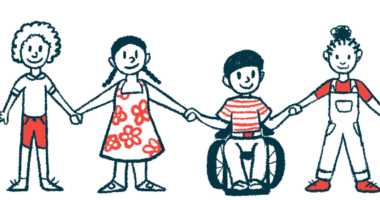Study findings may help in setting best Orkambi doses for children
Blood levels of therapy in kids found to vary by body weight, liver function

In children with cystic fibrosis (CF) treated with Orkambi (ivacaftor/lumacaftor), the levels of the medication reached in the blood depend on how much the children weigh and how well their liver is working, a new study discovered.
These findings offer insights into how to best adjust doses of the approved oral medicine for children — what researchers called “a first step toward personalized therapy” for improved outcomes among pediatric patients.
“These data suggest that dose adjustment is required after identifying variability factors to optimize efficacy,” the team wrote.
For example, the researchers observed that higher exposure to ivacaftor, one of the active ingredients in Orkambi, was linked to greater improvement of lung function after up to almost one year. That result suggests that heavier children may require a higher dose for a clinical response.
The study, “Lumacaftor/Ivacaftor Population Pharmacokinetics in Pediatric Patients with Cystic Fibrosis: A First Step Toward Personalized Therapy,” was published in Clinical Pharmacokinetics. The work was supported by a grant from the French Ministry of Health.
Scientists used modeling software to assess Orkambi effects in children
Marketed by Vertex Pharmaceuticals, Orkambi is approved for children and adults in the U.S., Canada, and Australia, as well as in the European Union. It is available as tablets or granules to be taken by mouth, and is indicated for patients who have two copies of the F508del mutation in the CFTR gene — the most common cause of CF. In the U.S., the therapy is approved for children as young as age 1.
Understanding how Orkambi works in children is important to produce the best response to treatment. To gain more information on the drug’s pharmacological properties, researchers in France used modeling software to describe Orkambi’s pharmacokinetics, or how it moves into, through, and out of the body.
“In the future, such therapeutic drug monitoring models should be useful and may help in dose optimization, especially in people without clinical benefit or side effects or in cases of drug-drug interactions,” the researchers wrote. The ultimate goal is to allow personalized therapy for CF patients.
The study included 75 CF children — 38 boys and 37 girls — who had a median age of 10 and who carried two copies of the F508del mutation. All were treated with Orkambi between December 2019 and May 2021 as part of a clinical trial called PREDICT-CF (NCT03894657). In that study, Orkambi was taken by mouth twice daily with fat-rich foods. At the time the trial started, Orkambi was approved in Europe for patients ages 2 and older.
According to the researchers, “this study is the first analysis of [Orkambi’s pharmacokinetics] in children with CF.”
Researchers say children would benefit from personalized dose levels
Using a so-called one-compartment model, the researchers observed that body weight had a significant influence on how much lumacaftor — the combination therapy’s other main ingredient — was cleared out of the body. This model also provided information on lumacaftor’s volume of distribution, a measure of the total amount of medication in the blood.
The levels of aspartate aminotransferase (AST), an enzyme that gets released into the bloodstream when the liver is damaged, also were linked to clearance. Patients with AST levels greater than two times the upper limit of normal had a 38% decrease in clearance.
Body weight, but not AST levels, also significantly influenced the clearance of ivacaftor.
The scientists noted that, “so far, ivacaftor dose is recommended to be identical in all children from 6 years old” — which the team suggests may not be optimal for all children.
“The current recommendations could lead to higher exposures in the youngest/lightest children, while lower drug concentrations may be observed in older/heavier children,” the scientists wrote, noting that therapeutic drug monitoring could be used to allow for personalized dosing that may be better for patients.
The use of therapeutic drug monitoring as a basis for dose adjustment in children with CF may be useful.
After 48 weeks, or nearly one year of treatment, 20% of the children had a change from the trial’s start of 10% or more in percent predicted forced expiratory volume in one second (FEV1), a measure of lung function. That indicated a “successful” response to treatment, according to the team. In CF, thick mucus can clog the airways and make it difficult for patients to breathe.
Higher exposure to ivacaftor, but not to lumacaftor, was linked to greater improvement of lung function. Patients with an area under the curve — a measure of total levels over time — greater than 14 mg.h/L, as well as a minimum concentration between two doses above 0.4 mg/L, were about seven times as likely to respond to treatment, the data showed.
“The exposure-effect relationship highlighted here for ivacaftor is of great interest to achieve personalized medicine through individual dose adjustment,” the researchers wrote.
“The use of therapeutic drug monitoring as a basis for dose adjustment in children with CF may be useful,” the team concluded.









